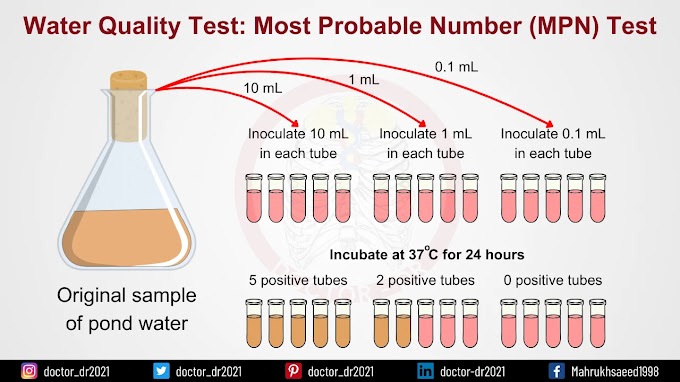Table of Contents
- Introduction
- Relative Risk (Risk Ratio)
- Rate Ratio
- Odds Ratio (OR)
- Attributable Risk (Risk Difference)
- Attributable Fraction
- Population Attributable Risk (PAR)
- Population Attributable Fraction (PAF)
Introduction
Descriptive epidemiology uses measures of disease frequency, association, and effects to examine how diseases occur and are distributed within a specific population over a defined period.
Analytic epidemiology focuses on understanding the causes of health outcomes and the risk factors linked to them.
Measures of association and effect are used to compare groups with different exposures, forming the basis for hypotheses about the relationship between exposure and outcomes.
Exposure refers to conditions that subject population groups to various factors, such as environmental conditions, insects, communicable diseases, sexually transmitted diseases, toxic chemicals, or individual characteristics like age, race, sex, immune status, marital status, occupation, and socioeconomic status, as well as surroundings such as access to health services and living conditions.
Measures of association help assess and quantify the strength of the relationship between exposure (risk factors) and health outcomes (disease) in both relative and absolute terms. These statistical measures estimate the magnitude and direction of relationships between variables in clinical and epidemiological research, depending on data collection methods, study design, and statistical approach used for analysis.
These measures are employed to identify factors that could contribute to the onset of health outcomes, particularly when comparing two or more populations with differing levels of exposure or health outcomes.
Risk ratio and odds ratio are calculated as relative terms, while attributable risk and attributable rate are calculated as absolute terms.
Relative Risk (Risk Ratio)
Relative risk, or risk ratio, is the ratio of the probability of a health outcome occurring in an exposed population group compared to the probability of the same outcome in a non-exposed group.
- A risk ratio greater than 1 indicates an increased risk in the exposed group.
- A risk ratio less than 1 suggests a decreased risk for the exposed group, implying that exposure may protect against the disease.
- A risk ratio equal to 1 indicates no difference in the risk of disease occurrence between the two groups.
Relative risk is commonly used in cohort studies to provide comparative information about the probability of an event based on exposure among populations with different disease prevalence. However, it is a relative measure, not an absolute one, as it compares the risk between two groups rather than giving an exact measure of event occurrence.
Rate Ratio
The rate ratio is a comparison of the rates (such as incidence, person-time, or mortality) between two different groups. The incidence rate ratio is calculated by dividing the incidence rate of the event of interest in the exposed group by the incidence rate in the unexposed group.
The interpretation of the rate ratio is similar to that of the risk ratio.
Odds Ratio (OR)
The odds ratio is commonly used in case-control or cross-sectional studies and is defined as the ratio of the odds of exposure in the case group to the odds of exposure in the control group. It measures the relationship between exposure and health outcomes in two categories.
- An odds ratio of 1 indicates no association between exposure and health outcomes in the population.
- An odds ratio less than 1 suggests a negative association, meaning the exposure acts as a protective factor, reducing the likelihood of disease in the case group.
- An odds ratio greater than 1 indicates a positive association, meaning the exposure is a risk factor, increasing the likelihood of disease in the case group.
When the prevalence of a health outcome is low (<10%) or rare, the odds ratio closely approximates the risk ratio or rate ratio. However, when the prevalence is high, the odds ratio tends to provide more extreme estimates compared to the risk ratio.
Attributable Risk (Risk Difference)
Attributable risk, or risk difference, is an absolute measure of effect that provides insight into the association between exposure and health outcomes. It is calculated by subtracting the risk of the health outcome in the unexposed group from the risk in the exposed group.
Attributable Risk (AR) = Risk of disease in the exposed group – Risk of disease in the unexposed group
Attributable risk is a valuable tool in epidemiological studies that assess the impact of exposure factors on a population level concerning the risk of a health outcome. It is influenced by both the relative risk and the prevalence of exposure. As a result, AR can be significant in cases where there is a common exposure with a low relative risk or a rare exposure with a high relative risk.
Attributable Fraction
Attributable Fraction represents the proportion of an event in the exposed group that is due to the exposure itself. It is calculated by dividing the attributable risk by the probability of the event occurring in the exposed group.
Population Attributable Risk (PAR)
Population Attributable Risk (PAR) represents the proportion of risk for a health outcome in both exposed and unexposed populations that is attributable to the exposure. It is calculated by subtracting the incidence of the health outcome in the exposed population from the incidence in the total population (the sum of both exposed and unexposed groups).
PAR = Incidence of the health outcome in the total population – Incidence in the exposed population
Population Attributable Fraction (PAF)
Population Attributable Fraction (PAF) represents the proportion of cases of a specific health outcome in a defined population that can be attributed to a particular risk factor. It is calculated by dividing the population-attributable risk by the total incidence of the health outcome in the population.













